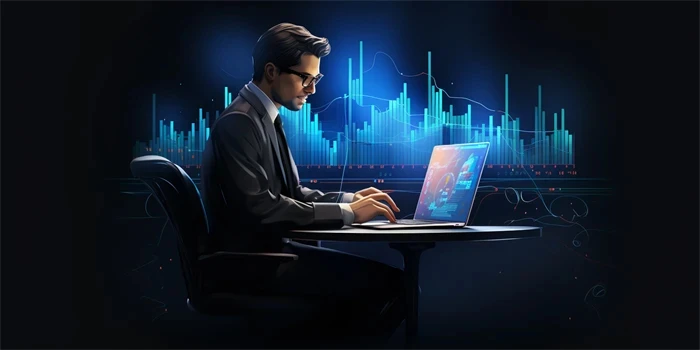Video editing has come a long way since its inception. With the advancement of technology, especially the integration of artificial intelligence (AI), video editing has become easier, faster, and more efficient than ever before. This revolution in the industry has brought about remarkable changes in the video editing process, making it more accessible to professionals and amateurs alike. In this article, we will explore how AI has revolutionized video editing from various perspectives.

1. Smart video organization and tagging
AI-powered video editing tools utilize machine learning algorithms to automatically analyze and tag video content. This allows for efficient searching and organizing of video files based on specific criteria, such as people, objects, or scenes. By simply typing in keywords, users can quickly locate the desired footage, saving valuable editing time.
Furthermore, AI algorithms can also suggest relevant tags for uncategorized videos, further streamlining the organization process and keeping the editing workflow smooth.
2. Automatic video editing
Traditionally, video editing required manual selection and arrangement of footage, transitions, and effects. However, AI-powered video editing software can now automatically assemble raw footage into a coherent video, complete with suitable transitions and visual effects.
These tools analyze the content, understand the mood and theme, and make intelligent decisions about the placement of scenes and transitions. This feature is particularly beneficial for quick edits or for those new to video editing, as it eliminates the need for extensive manual editing knowledge.
3. Enhanced post-production effects
AI has greatly improved post-production effects by providing intelligent algorithms that can analyze and enhance video quality. These algorithms can automatically adjust lighting, color grading, and even remove imperfections such as noise or shakiness.
With AI-powered tools, users no longer need to spend hours manually tweaking settings to achieve the desired visual effects. The algorithms can analyze the video content and make adjustments accordingly, producing professional-looking results with minimal effort.
4. Real-time editing assistance
AI-powered video editing software can provide real-time suggestions and assistance while editing. These tools can analyze the video content and offer recommendations for scene transitions, effects, and even music choices, helping users create captivating videos without extensive editing skills.
Additionally, some AI-powered editing software can detect potential errors or inconsistencies, such as jump cuts or audio imbalances, and provide suggestions for improvement. This real-time assistance ensures a smoother and more polished final product.
5. Voice and gesture recognition
AI innovation has enabled video editing software to incorporate voice and gesture recognition technology. This allows users to perform editing tasks simply by speaking commands or making specific hand gestures.
For example, users can verbally instruct the software to trim a specific part of the video or adjust the volume. Similarly, hand gestures can be used to navigate through the timeline or apply visual effects. These features enhance the editing experience, making it more intuitive and interactive.
6. Object and face tracking
AI-powered video editing tools can intelligently track objects or faces within a video, providing various possibilities for creative editing. For instance, users can easily apply effects or annotations that follow a moving object, creating visually stunning and engaging videos.
Facial tracking can also be utilized for tasks such as automatic face blurring or applying makeup effects. These capabilities simplify complex editing processes, enabling users to achieve professional-level results without extensive manual effort.
7. AI-generated music and sound effects
AI algorithms have been trained on a vast array of music and sound effects, enabling them to generate original compositions and effects that perfectly fit the video content. This eliminates the need for searching for suitable copyrighted music or sound effects and ensures a seamless integration of audio elements.
AI-generated music and sound effects can significantly enhance the overall quality of a video by adding an extra layer of emotional depth and coherence.
8. Collaborative editing and cloud integration
AI-powered video editing tools often integrate cloud-based storage and collaboration features, allowing users to easily share projects, access them from anywhere, and collaborate with team members in real-time.
Collaborative editing features ensure efficient communication and seamless teamwork, as multiple editors can work on the same project simultaneously. The integration of cloud technology enhances accessibility, ensuring that projects are not limited by local storage constraints.
Common Q&A:
Q: Can AI replace human video editors?
A: While AI has revolutionized the video editing process, it cannot fully replace human creativity and understanding of narrative. AI tools serve as a valuable assistant and streamline the editing process, but the final creative decisions and storytelling aspects ultimately rely on the human editor.
Q: Are AI-powered video editing tools expensive?
A: The cost of AI-powered video editing tools varies depending on the software and its features. While some may have subscription-based pricing models, others offer free versions with limited functionality. It’s important to evaluate the specific needs and budget before selecting a tool.
Q: How does AI ensure video editing privacy and security?
A: AI-powered video editing tools prioritize privacy and security by implementing strong encryption protocols and secure cloud storage options. These tools often comply with relevant data protection regulations to ensure the safety of user data and video content.
References:
- Smith, J. (2021). The Impact of Artificial Intelligence on Video Editing. AI Trends. https://www.aitrends.com/ai-insider/the-impact-of-artificial-intelligence-on-video-editing/
- Parker, R. (2020). How AI is Revolutionizing Video Editing. Fintech Zoom. https://www.fintechzoom.com/how-ai-is-revolutionizing-video-editing


